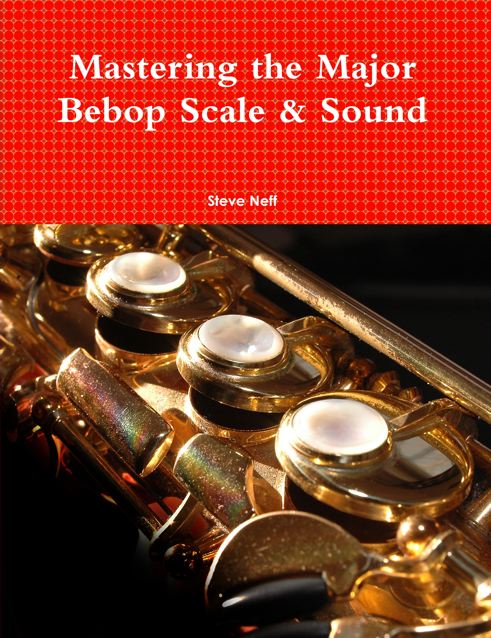This is a Vandoren V16 A5M that I bought from Dave Valdez in Portland. Dave had Brian Powell reface the mouthpiece to a .080 and put a very long facing curve on it (23mm) that matched a Slant Link that has been Dave’s main piece forever. The reason I bought this piece was because I heard a bootleg recording of Dave playing in some club and he had a killer alto sound and style. Dave and I went to Berklee together back in the ’80’s. I like this piece a lot!!
It’s a little bright but has a nice fat sound to it. The longer facing curve makes the sound fatter and bigger. I also believes it adds to how expressive you can be with the mouthpiece since any slight variation in your embouchure will move the reed much more than on a shorter facing curve. Brian Powell told me that a 23mm facing curve for alto is really long and not a typical curve that players like. I like it though. It’s plays very different than other alto mouthpieces I have played. Check it out!





Stupid question, but which mouthpiece patches are you using? Never seen some so thin….hunting for the mouthpiece patch that’ll feel like real mpc..
Try FAM mouthpiece patches look them up on ebay
To me this sounds kinda close to the Theo Wanne Kali HR and the Ishimoro Super custom. Slightly brighter but very warm. I bet this would be alot cheaper than either of those so its got my interest. Do you know how much the refacing would cost? Thanks. I currently have a JJ Classic 6 and i like it but want something a little more warm and singing.
I really love the sound of this mouthpiece. It is much less brighter than other ones ive heard in your articles. It has a classy dark jazz tone. If I buy a V16 A5M would it have the sound this one has?
Jason, It very well could although there are other factors at play also. Different players have different embouchures, playing techniques, air support, oral cavities, etc……… That being said, with a mass produced mouthpiece like the V16, I try to order three of the mouthpiece I am interested in and will pick the best of the 3. If there are no differences and they are all great, that is awesome. Many times there are differences and I like to have a choice. Good Luck. Let us know if you try one and how you like it. Steve
Steve one more question. Ive heard good things about the Bari Hybrid mouthpiece. I really want a darker classic sound like i mentioned before. Which do you think is the better sounding mouthpiece? P.S ive seen your review for both but im wondering which you liked better.
Jason,
I really like this Vandoren V16 A5M but you have to remember that this has been altered big time by Brian Powell. I know the facing is completely different and much longer. The Bari mouthpiece was a very good mouthpiece also but I personally prefer this V16 that BP refaced. If you’re asking me to compare the Bari to a regular V16 that is a harder call. I would say they are both about equal for me………..Steve
ive never heard of a slant link? ive heard of a otto link sig are they the same mouthpiece or am i wrong??
Hi, Steve Thank for your great review
I’m using lebayle hard rubber alto now but I wanted new sound.
So I’m looking for V16 mouthpiece small chamber but which opening size will more fit with me.
Mine opeining size is 196mm and v16 a5 is 188mm and a6 is 196mm. I’ve never used small chamber mouthpiece so I wonder if a6 size will give excessive resistence to me.
Gil, I would just go with the same tip opening you are used too. If the smaller chamber gives resistance it would do so for you on a 5 or 6 tip opening in my mind since the chambers would be the same. Steve
Hi Steve,
Greetings from Brazil
Another excellent analysis, congratulations.
I’m lost about which mouthpiece to use in the alto sax. I have played with a Jody Jazz HR 7M, I use François Louis ligature and vandoren v16 n2 reed. He liked this sound but the high sound one was very buzzy, very strident, although the bass were great. So I bought this V16 from its review, vandoren V16 A7M, I thought it has a dark, lifeless sound. I would like a fat round sound, very smoth, but with life and a slight brightness, in the line of these meyer mouthpieces, mouthpieces of medium chambers, but with great projection for solos (flexibility). Within that I’m looking for what you suggest I should try for mouthpieces?
a Meyer? Otto Link Tone EDGE? the new d adario selec jazz? Some of these or other alternatives, what do you suggest?
Or should I try to lower the numbering of the mouthpiece a bit to try to force heavier reed type v-2.5 (which is currently heavy for me)?
Thank you again, your website is incredible.
Pedro, If you tried the V16 A7M and found it too dark and lifeless I would suggest trying the A7S+. It has a chamber that is between the medium and small so it would give you more of the slight brightness you are looking for that the A7M doesn’t have for you. You could also try a Vandoren Java 2 1/2 reed. I find the V16s you are using run a bit harder and stiffer than the Javas. You might find the Javas to be brighter for you. I do…… Steve
Steve, thank you very much.
I’ll try S +
hugs
https://soundcloud.com/suigenerisradioshow/vandoren-v16-a5-alto-sax-mouthepiece-test
Dear Mr Steve Neff,
The last three weeks I have switched from Selmer S80 mouthpiece to this Vandoren V16 (A5) on my alto sax. All these years I had classical tuition on saxophone, and now I’m getting to a new embouchure. Still I have not found “my embouchure” on the new concept of blowing through the horn.
From D’Addario Reserve (strength 3) I have to go a bit down to the new more “free-blowing” embouchure.
I have tried lots of brands of reeds, and I think that I should switch to La Voz reeds (medium or medium hard),
or D’Addarrio Jazz Select (3 soft).
Still I have not found my reed for this combination of mouthpiece, lig and reed.
I use Francois Louis gold plated ligature.
Above I have posted my mouthpiece review, and I was wondering about my tone.
Should I use softer reeds? I am used to more resistant filed reeds, due to my classical “past”.
Thank you so much for all your beautiful playing and all useful insights on sax music!
Billy Vazouras
Bill, On the recording the reed does sound a bit hard. Also, it doesn’t seem like you are blowing very hard. I always try to get my students to blow at 80% capacity when practicing. I would be curious what you feel you are playing at on that clip? 100% is of course blasting all the air you have as loud as you can. I also notice some of the notes have a nasal quality to them which can happen when your reed is too hard. It can also happen with some people when the angle of the sax neck and mouthpiece is too high. I have no idea if this is the case but I have had students from a classic background that had this issue and they played with the sax really high. You can experiment with loosening the neck strap a bit and see if that changes anything if that is the case. I would try a softer reed and maybe experiment with rolling your bottom lip out a little bit to free up the reed to vibrate more. I have a lesson on my site on the subject called “A Mature Embouchure” if you want to check it out. I’m kinda shooting in the dark and guessing as someone who doesn’t know you but I hope something in here helps, Steve
Dear Mr Steve Neff,
When I was playing this line, I was afraid of squeaking or bringing up some accidental altissimo-overtone effect specifically on high C#. That was what mainly what occurred on my playing due to the bigger chamber of the mp I guess. My body position is loose enough and I do get a good grip of my sax I think. What I’ve cleared through the lesson, is that there is no embouchure refulation. My embouchure and bottom lip are loose enough I think (sometimes a get a bit flat and I don’t get the pitch, but I’ll work on my tone production more). As a last query, what you would suggest me, in order to improve my tone on middle G and above till high F#. Long tones, overtones, and tongue exercises? Any reed brands that you prefer with this mouthpiece. I have used to play D’Addarrio reeds so far (filed) and also I’ve tried some La Voz.
Thanks for your insights Sir!
Sincerely
Billy Vazouras
Hi Billy, It’s hard for me to give advice on improving your tone from G and above because I don’t know what issues you are experiencing. Usually, I will hear a student and then have ideas on what they should try to improve. As far as the embouchure, I teach that students should have a similar tightness as if they were to hold a pen in their mouth using your embouchure so that the pen is horizontal to the floor. That is the level of tightness that I use usually. Hope this helps, Steve
I’m auditioning the current Vandoren V16 alto #6 and #7 tip, SMALL chamber, for my 1924 Conn New Wonder “1.5” (Chu w/o the nail file; one of the last made before the model change over 6 weeks later). These horns are supposed to be matched ONLY with LARGE chamber mouthpieces, but the small plays better than the medium (V16). Vandoren bills these pieces as having a “medium long” facing (they don’t give a measurement). I mainly play my late Mark VI tenor, but recently bought the Conn alto because I’m intrigued by its tonal characteristics (I also have an early Mark VI alto). So, I’m wondering if the facing length somehow compensates for the smaller chamber. I have TMJ (right side only) and some mouthpieces hurt (Bergs are horrible; Morgan alto NY as well but not as bad as the Berg). I don’t know what facing length the Morgan has (Excalibur; the low beak may be the problem). I’m wondering if you’ve heard from any players with TMJ and whether shorter / longer facings affect their TMJ issues? And also whether facing length compensates for a smaller chamber? I use Francois Louis 350 Spectroso with a “2 soft” Rico Select Jazz on my tenor and everybody from Coltrane to Sanborn to Chick has recently complimented my playing and tone, so I must be doing something right….